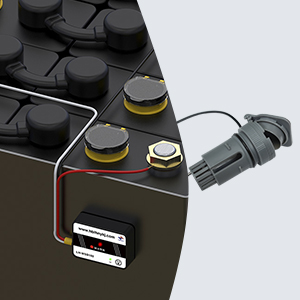After the new national standards for electric bicycles established some rigid regulations, many people said that the fate of domestic lead-acid batteries for electric bicycles will come to an end. In recent years, lead-acid batteries, as a century-old man, have been continuously replaced by new lithium-ion batteries in the battery industry, and two songs of ice and fire have been staged. So, what are the differences between lithium-ion batteries and lead-acid batteries?
In terms of components. Under the condition of the same capacity, the lead-acid battery is 3 to 5 times that of the lithium-ion battery package, so the volume of the lead-acid battery is also larger, and the mass of the electric bicycle of the new national standard does not exceed 55 kg, which will make the lithium-ion battery Easier to assemble than lead-acid batteries.
Lead-acid batteries are functionally identical to lithium-ion batteries
The first is to look at the two most fundamental parameters of the battery: voltage (V) and capacity (AH).
Although the single-cell voltage of lead-acid batteries is 2V and the single-cell voltage of lithium-ion batteries is 3.7V, they can all be connected in series. For example, the 60V lithium-ion battery we hear in daily life is 16 lithium-ion batteries. The single-cell series connection is 59.2V (3.7V*16=59.2V), and the 60V lithium-ion battery pack is connected in series with five 12V lithium-ion batteries. In terms of voltage, there is no difference between lithium-ion batteries and lead-acid batteries. If 60V battery lead-acid batteries and 60V battery lithium batteries do not consider their internal materials, they can be completely consistent in function. Lithium-ion batteries 60V and lead-acid batteries 60V are suitable for use In terms of battery voltage requirements, the latter is exactly the same.
How to know when the forklift lead-acid batteries need water?

In terms of other stability, lead-acid batteries and lithium-ion batteries can also be controlled by the amount of internal chemical substances. A 100AH lead-acid battery and a 100AH lithium-ion battery have the same capacity (with 60 catties of iron and 60 catties of cotton are the same).
Lead-acid batteries and lithium-ion batteries are very different from each other
The above is to look at lead-acid batteries and lithium-ion batteries from the two basic characteristics of batteries. They look very similar. We all do the same work and pay the same labor. But they are very different. You can’t mix lead-acid batteries with lithium-ion batteries, let alone lead-acid batteries 18650 (because 18650 is a technical term for lithium-ion batteries).
The main difference between lead-acid batteries and lithium-ion batteries is that the internal materials are different at present, so the chemical principles in the chemical equations in which they produce electric energy are also different. Lead-acid batteries mainly react through metal lead and sulfuric acid, and lithium-ion batteries mainly Reaction occurs through lithium alloy and graphite. This fundamental reason leads to significant differences in the performance and cost of lead-acid batteries, which in turn lead to significant differences in the prices of lead-acid batteries and lithium-ion batteries.
